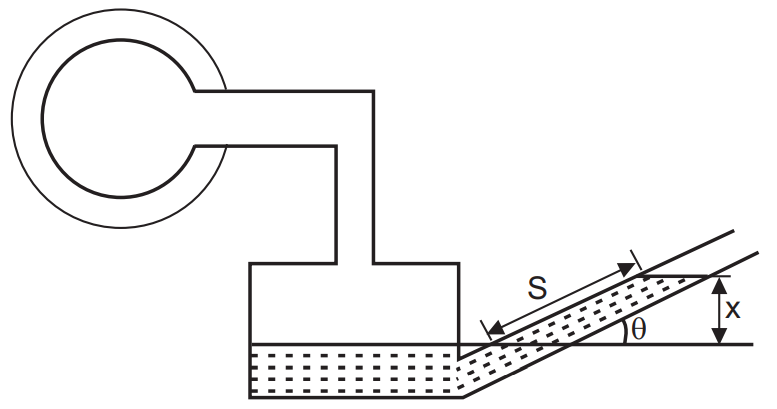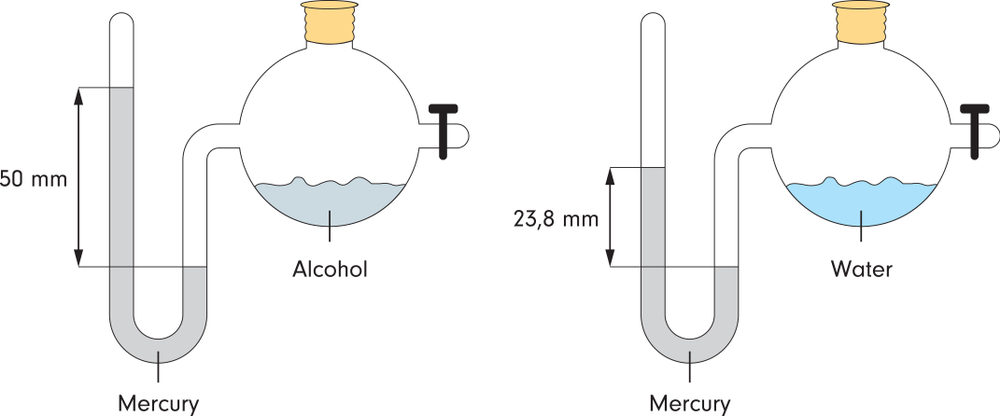Inclined Manometer: For accurate measurement of small pressure differences by an ordinary U-tube manometer, the ratio of the density of mercury (ρm) to the density of water (ρw) must be close to unity. This is not possible if the working fluid is a gas. A manometric liquid of density very close to that of the working liquid and giving at the same time a well-defined meniscus at the interface is not always possible. For this purpose, an inclined tube manometer is used.

If the transparent tube of a manometer, instead of being vertical, is set at an angle ‘θ’ to the horizontal, Fig.1, then a pressure difference corresponding to a vertical difference of levels ‘x’ gives a movement of the meniscus s = x / sin θ along the slope. If ‘θ’ is small, a considerable magnification of the movement of the meniscus may be achieved. Angles less than 50° are not usually satisfactory, because it becomes difficult to determine the exact position of the meniscus. One arm of this manometer is usually made large in cross-section than the other. When a pressure difference is applied across the manometer, the movement of the liquid surface in the wider arm is practically negligible compared to that occurring in the narrower arm. If the level of the surface in the wider arm is assumed constant, the displacement of the meniscus in the narrower limb needs only to be measured, and therefore only this arm is required to be transparent.
Make sure you also check our other amazing Article on : Inverted U-tube Manometer
